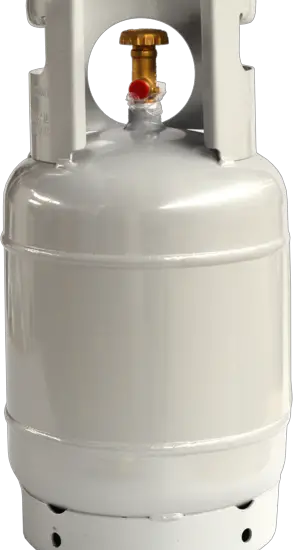Right off the bat, refrigerant 513A, or as you might know it, Opteon XP10, is a hydrofluoroolefin (HFO) blend that’s shaking up the world of refrigeration. Thanks to its lower global warming potential (GWP) and similar cooling properties to R-134a, it’s the go-to choice for medium- and high-temperature refrigeration applications. This article offers a deep dive into Refrigerant 513a, covering its physical properties, applications, and environmental impact. So buckle up and let’s get chilled!

Table of Contents
What is Refrigerant 513A?
Chemical Composition
Now, what’s the deal with R513A’s chemical makeup? This cool character is a blend of certain hydrofluoroolefins that give it its special features. We’ll explore what makes up its core and how it’s structured.
Main Components
The heart of Refrigerant 513a is a blend of R-1234yf and R-134a. These two components, working in harmony, give our refrigerant its distinctive properties. A great paper by Zhang et al. (2020) gives a detailed analysis of the thermophysical properties of this blend.
Chemical Properties
R513a truly makes a splash with its unique chemical properties. It boasts a low boiling point which makes it highly efficient in energy conversion. It’s also got incredible stability, maintaining its structure under various temperature and pressure conditions, providing reliable and consistent performance. The chemical structure of 513a ensures less reactivity with other substances, meaning fewer risks of unwanted chemical reactions. Intrigued yet?
Brand Names and Trade Associations
Refrigerant 513A doesn’t just stick to one name. You might see it under brand names like Opteon XP10, brought to you by Chemours. It’s also recognized by various trade associations worldwide, such as the Air-Conditioning, Heating, and Refrigeration Institute (AHRI) and the European Partnership for Energy and the Environment (EPEE).
Physical Properties of R513A
Thermodynamic Properties
Let’s talk thermodynamics. Refrigerant 513A’s low boiling point allows it to evaporate quickly, absorbing heat from the surrounding area and providing efficient cooling. Moreover, its pressure-temperature relationship is near-identical to R-134a, meaning it can be used in existing systems with minimal adjustments.
Temperature Range
Refrigerant 513A operates effectively across a broad temperature range, making it a chameleon in the world of refrigerants. From chilling drinks in a supermarket cooler to cooling down a hot car in the summer, 513A’s versatility is impressive.
Pressure Characteristics
Balance is key, especially when it comes to pressure characteristics. R513A maintains a stable vapor pressure across its operating temperature range, contributing to consistent cooling performance and less wear on system components.
Safety Properties
Flammability
Refrigerant 513A isn’t one to stir up trouble. It’s classified as A1 by ASHRAE, meaning it’s low in flammability and doesn’t pose a significant fire risk. However, like all refrigerants, it should still be handled with care.
Toxicity
When it comes to toxicity, Refrigerant 513A plays nice. It’s low in toxicity, but still, caution is advised when handling and it’s important to ensure proper ventilation in case of leaks.
For more articles on refrigerants, click here: Articles on Refrigerants: The Ultimate Guide to Understanding Them
Applications of R513A
Medium-Temperature Refrigeration
From grocery store refrigeration systems to heat pumps, Refrigerant 513A performs admirably, providing the right amount of chill without using excessive energy.
High-Temperature Refrigeration
Don’t be fooled; Refrigerant 513A can handle the heat, too. It’s used in high-temperature refrigeration applications such as supermarket condensing units.
Automotive Air Conditioning
That cool breeze from your car’s AC? That could be thanks to Refrigerant 513A. Its thermal efficiency and low GWP make it a popular choice in automotive air conditioning systems.
Environmental Impact of Refrigerant 513A
Global Warming Potential
You’ve heard it right! Refrigerant 513A has a significantly lower GWP than its predecessor, R-134a. This means it contributes less to global warming if it’s accidentally released into the atmosphere.
Comparisons with Other Refrigerants
Compared to the commonly used R-134a, which has a GWP of 1430, Refrigerant 513A boasts a GWP of just 631, making it a more environmentally friendly choice.
Ozone Depletion Potential
Refrigerant 513A is no threat to the ozone layer, with an ODP of zero. It’s a friend to the environment and a foe to global warming.
Sustainability and Regulations
International Regulations
On a global level, the use of Refrigerant 513A is supported due to its low GWP and ODP. The Kigali Amendment to the Montreal Protocol, an international treaty aimed at phasing down HFCs, recognizes 513A as a suitable alternative to high-GWP refrigerants.
National Regulations
In the US, the EPA SNAP program lists Refrigerant 513A as an acceptable substitute for certain applications. Similar endorsements can be seen in national regulations of many other countries, which often encourage the use of low-GWP refrigerants. Always double-check local guidelines to ensure you’re in compliance.
